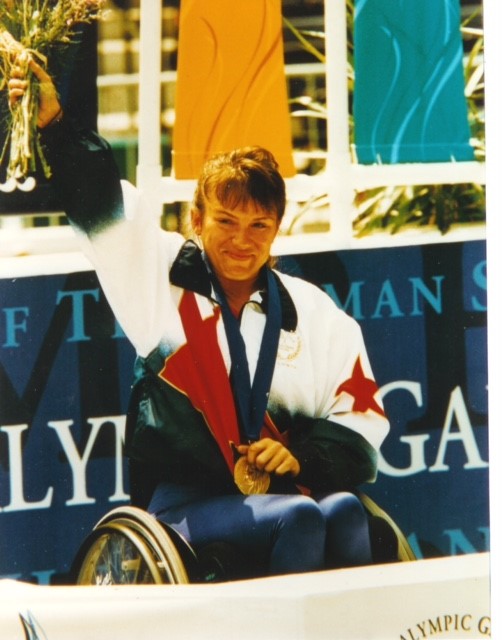
Dec. 3 marks the annual observance of the International Day of Persons with Disabilities. This day aims to promote the rights and well-being of persons with disabilities in all aspects of society and increase awareness in every aspect of political, social, economic and cultural life.
This year’s theme for the International Day of Disabled Persons with Disabilities focuses on the leaders that work towards making a more inclusive, accessible and sustainable world for all.
Today, we hear from an iconic leader at FEMA, our Director of Disability Integration and Coordination Linda Mastandrea. She shares how far we have come and the challenges we still face in the world of emergency management.
What are some of the biggest obstacles we still face today in promoting the rights and well-being of persons with disabilities?
The biggest obstacle as I see it as that we often still consider providing access to programs and services as “special” or “different” instead of just considering them part of how we do business. We consider the cost of providing accommodations to determine whether or not they’re “reasonable” instead of focusing on what the individual needs to access a place, a program or service effectively. I think it is long past time for a paradigm shift where we stop looking at what’s “reasonable” and instead look at what is needed to facilitate the inclusion of people with disabilities as well as to improve their productivity and engagement in school, work and the community.
What obstacles do we face that are specific to emergency management?
Though there’s been marked improvement over the last several years, there are still many towns and cities where emergency managers and people with disabilities and disability organizations are not connected, and people with disabilities aren’t integrated into emergency operations plans. This can lead to ineffective planning and gaps in service when disasters strike.
What has FEMA done to work toward solutions to these challenges?
One of the things we’ve done is help to facilitate some of that connection with education and outreach. Our Regional Disability Integration Specialists are on the front lines, providing emergency managers in their communities with resources and technical assistance to build their capacity to serve their whole community, including people with disabilities. We’re refreshing a course for FEMA employees to help them understand how to integrate people with disabilities into their programs and services. And we’re refreshing a course for emergency managers and planners, aimed at helping them build successful emergency operations plans that consider and integrate the needs of people with disabilities in their communities.
How does the Office of Disability Integration and Coordination integrate individuals with disabilities into all aspects of disaster preparedness, response, recovery and mitigation?
We recognize that one office can’t do it all. That’s why the Office of Disability Integration and Coordination is focused on building the capacity of FEMA, of emergency managers and of people with disabilities themselves. Each of us has a role to play to ensure that people with disabilities can successfully recover from the impacts of disaster. Our office provides tools, resources, training and technical assistance to build that capacity and improve our ability to prepare, respond and recover from the effects of disasters.
Before coming to FEMA, you worked as an attorney concentrating in disability law and civil rights, taught disability law and trained emergency managers around the nation. Do you feel a calling to this work?
Though I grew up with a disability, I didn’t intend to get into disability focused work. But life had other plans for me. Playing wheelchair sports in college, I was exposed to the issues and barriers faced by people with disabilities as we traveled around the nation and the world. I remember being on a plane flying to competition and one of my teammates had to use the bathroom. She literally had to scoot down the aisle on the floor because there were no aisle chairs on board back then.
My first job out of college was selling health plans to individuals and families. When an applicant had a family member with a disability, our medical director had to review the application. And he always denied them. I got in argument after argument with him, and I remember asking, “So the only reason I can have this insurance is because I work here?!” He, of course, said yes. These experiences led me to want to do something to improve the situation for people with disabilities, so I took a job with a Center for Independent Living. Then the Americans with Disabilities Act happened, and I decided I wanted to go to law school so I could use that tool to help people with disabilities.
How can others who want to make a difference find ways to lead in their own communities?
Each of us has different skills and interests and comfort levels. Some may want to run for office and make an impact that way. Others may be interested in working for government at the local, state or federal level. Others may want to volunteer—in the emergency management space engaging with CERT and VOAD opportunities, for example. But volunteerism with other organizations that improve the lives of people impacted by disaster can be equally meaningful. Others may want to speak to our legislators about needed legislative changes or write letters to the editor about issues that concern us. It is important to pursue the options that speak to you, that feel right for you. We all have the ability to be leaders in our own ways and to contribute to making our communities better for everyone before, during and after disasters.

From 1990-1999, FEMA Director of Disability Integration and Coordination Linda Mastandrea represented the United States seven times in wheelchair track in international competition, including two Paralympic Games, winning 15 gold and 5 silver medals.


